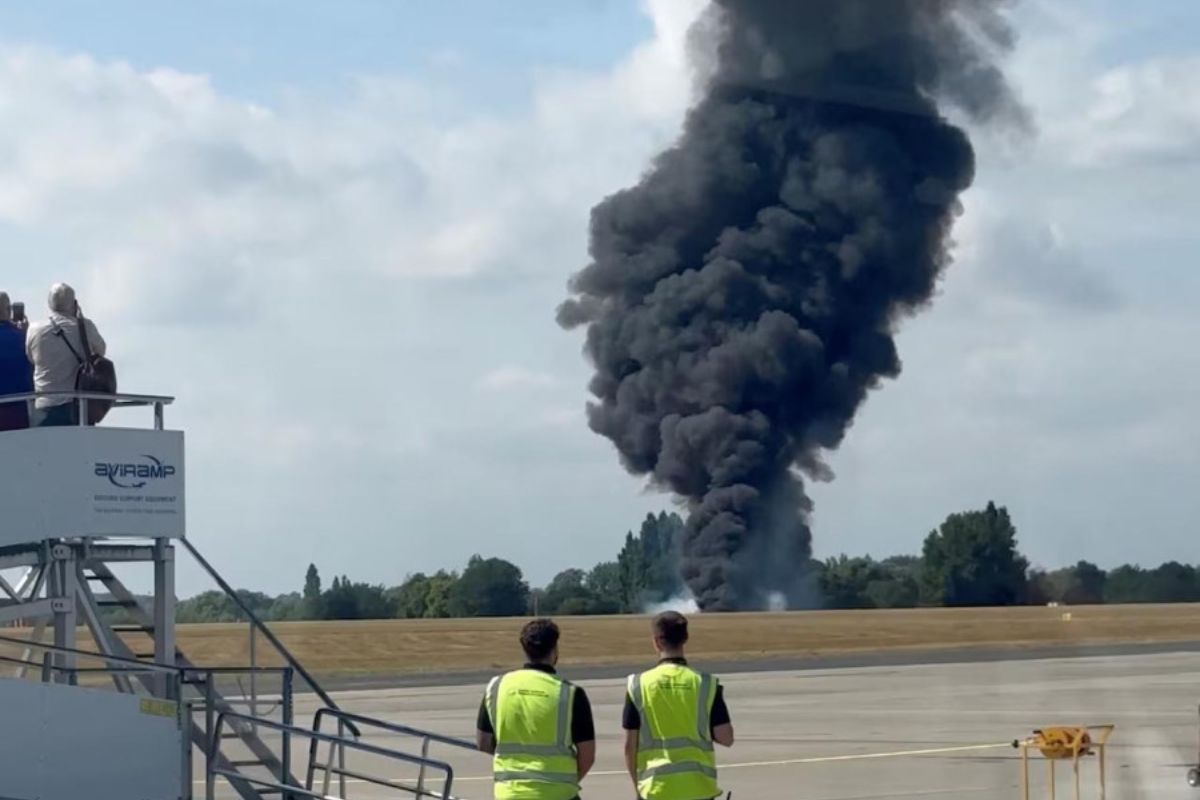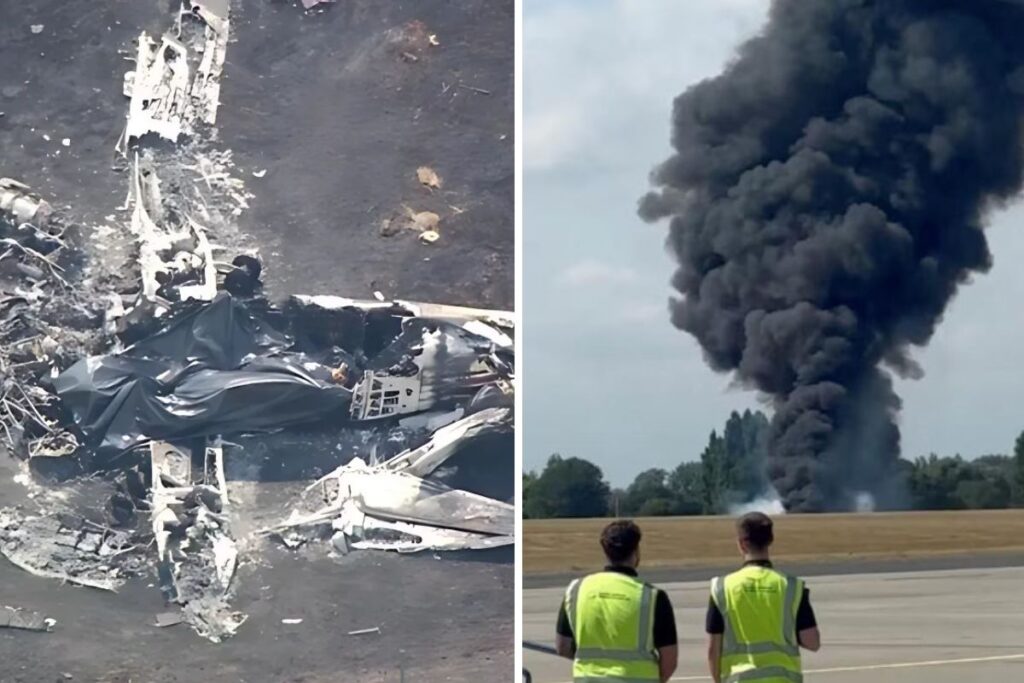On Sunday afternoon, July 13, 2025, life around London Southend Airport changed in an instant. Neighbours who had spent their mornings walking dogs or shopping in town found themselves staring at a plume of smoke rising above the tarmac. A Beechcraft King Air B200 had just left the runway. Moments later it crashed, rolled onto its nose and burst into flames. Four people on board lost their lives.
How could a simple flight end this way? The answer will emerge only after careful work by investigators. But the memory of that day remains vivid for many who saw what happened. This is the story of that afternoon, the people it touched and the path to answers.
The Takeoff and the Crash

The King Air lifted off at about 3:57 pm local time. Weather reports show that the sky and wind were calm. The plane climbed normally for the first few seconds. Then witnesses said it banked right. It looked as if the pilot tried to correct the tilt. Instead, the plane rolled over, nose down. It struck the ground just past the end of the runway.
Flames still burnt fierce when crews reached the crash site. The heat kept them back at first. When they could, they doused the blaze. They found no survivors.
Four Lives Lost
Authorities confirmed that all four souls on board died in the accident. Two were pilots from the Netherlands. The other two were medical workers. One was a flight nurse named Maria Fernanda Rojas Ortiz. She was 31 years old and had just begun her first shift that day. Friends said Maria loved helping people. She spoke of her dream to serve in the air as well as on land.
The fourth victim was a German doctor. Colleagues described her as calm under pressure and full of compassion. Tributes poured in from families in three countries.
The Airport Goes Silent
Southend Airport closed all operations at once. The terminal emptied. Passengers had to rebook flights. Some sat in seats for hours, waiting for word. Others arranged rides to Gatwick or Stansted. Local bus and train services saw more traffic than usual.
Staff and travellers gathered outside. The mood was grim.
Gathering Clues
On the following morning, the Air Accidents Investigation Branch (AAIB) teams moved in. They combed through scattered wreckage. They marked each piece. They recorded the ground scar where the plane hit. High-resolution photos captured every detail.
Data recorders were found in the charred remains. They were flown to a secure lab for analysis. Flight logs and maintenance records arrived from the Netherlands. Investigators began to piece together the plane’s last seconds.
That mix of witness accounts and technical data will form the backbone of the final report. It may take months. But each small detail matters.
The Wider Picture
Air travel remains safe for millions each day. But this crash raises questions all around the industry. The Beechcraft King Air B200 model has a strong record of reliability. Yet no plane is immune to failure or error.
Zeusch Aviation, the Dutch firm that operated the aircraft, issued a brief statement. It spoke of deep sorrow and promised full cooperation with the AAIB. The company also noted its history of safe operations over many years.
Safety experts already point out that every accident leads to better rules and more training. They expect this case to bring fresh checks on maintenance routines and pilot training for flights of this type.
For Travellers and Families
If your trip was booked through Southend that Sunday, you felt the impact directly. Airlines offered refunds or alternative routes. Some charter operators provided free shuttles to other airports. Travel agents worked late into the night to sort out new tickets.
Families of the victims faced even greater hardship. Embassies from the Netherlands, Germany and Chile liaised with local authorities. Plans began for the repatriation of the remains. That process demands care and respect. It also brings home the reality of loss to loved ones far away.
Also read: Travel Smarter: The Best Apps That Belong in Every Suitcase
The Path to Answers
Investigators will not rush their work. The AAIB report must be thorough. It will examine mechanical systems, weather conditions, pilot decisions and maintenance history. Each factor may hold a key.
Early clues suggest no extreme weather or major air traffic issues at the time. That leaves technical or human factors as likely causes. But anything is possible. Engine failure. A control surface fault. A momentary lapse in communication.
Once the report appears, safety recommendations will follow quickly. Those could include new checks before every flight or changes to training for emergency procedures.
A Community That Cares
Even as investigators work, life goes on in Southend. Airport staff prepare for more flights. Passengers return to familiar routines of checking in, going through security and boarding. Yet the memory of that fireball lingers.

